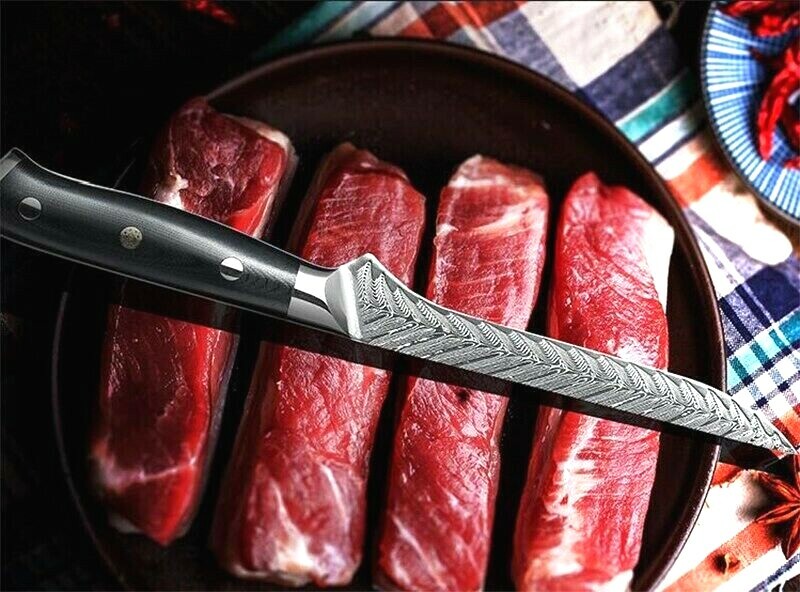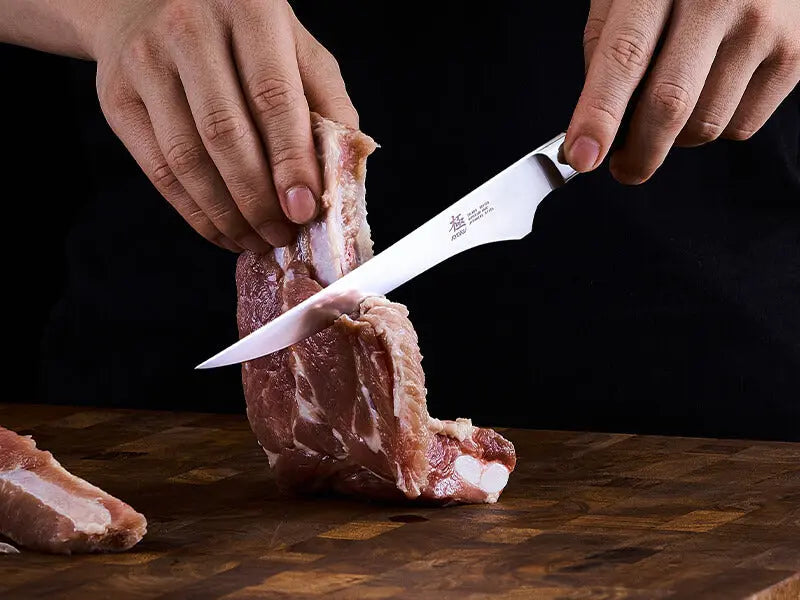In the culinary world, the importance of a well-balanced boning knife cannot be overstated. Whether you’re a professional chef or a home cook, understanding the nuances of boning knife weight balance can significantly enhance your kitchen experience. In this article, we delve into what makes the balance of a boning knife so critical and how it affects performance and safety.

Understanding the Basics of Boning Knives
Boning knives are specialized tools designed for removing bones from meat, poultry, and fish. Their design is distinct, typically featuring a narrow blade that provides precision and control. The balance of these knives plays a pivotal role in their functionality, influencing how efficiently and safely they can be used.
Why Boning Knife Weight Balance Matters
The term weight balance in the context of boning knives refers to how the weight is distributed across the knife. A well-balanced knife feels comfortable in the hand, reducing strain and increasing precision. This balance affects not only how the knife handles but also how it performs specific tasks like deboning and slicing.
Impact on Precision and Control
A balanced knife allows for greater precision. This is particularly important when working with delicate meats or fish, where accurate cuts are essential to preserve quality. A poorly balanced knife can lead to uneven cuts and increased waste.
Enhancing Safety in the Kitchen
Safety is a top priority in any kitchen. A well-balanced boning knife reduces the likelihood of accidents. When the weight is evenly distributed, the user exerts less force, minimizing the risk of slips and cuts. This not only keeps the cook safe but also protects the quality of the food being prepared.
Factors Influencing Boning Knife Weight Balance
Several factors contribute to the weight balance of a boning knife. Understanding these can aid in selecting the right knife for your needs.
Blade Material and Design
The material and design of the blade significantly affect the knife’s balance. High-quality materials like stainless steel offer durability and a good weight, while the blade’s shape helps determine how weight is distributed. Curved or straight blades cater to different deboning tasks.
Handle Composition
The handle’s material and size also play a crucial role. A heavier handle can shift the balance point towards the user’s hand, offering more control. Conversely, a lighter handle might make the knife feel blade-heavy, affecting how it is maneuvered during use.
Choosing the Right Boning Knife for You
Selecting a boning knife involves considering your specific needs and preferences. Buying a boning knife can be a daunting task given the variety available. However, focusing on weight balance can simplify the decision-making process.
Assessing Your Cutting Needs
Think about the types of meats you typically work with. Larger cuts may require a stiffer, more robust knife, whereas fish might need a lighter, more flexible one for delicate cuts.
Testing the Knife Balance
Before purchasing, hold the knife to test its balance. The midpoint of the knife should feel natural in your hand, neither tipping forward nor backward. This ensures comfort and efficiency during use.
Maintaining Your Boning Knife
Maintenance is key to preserving the balance and effectiveness of your knife. Regular sharpening, proper storage, and careful cleaning all contribute to the longevity of the knife’s balance.
Sharpening Techniques
Keeping the knife sharp is essential for maintaining balance. A sharp blade cuts more efficiently, reducing the effort required and preserving the knife’s balance over time.
Proper Storage Solutions
Storing your knife correctly protects it from damage. Using a knife block or magnetic strip can help maintain the edge and balance by preventing unnecessary wear.
Expert Opinions on Boning Knife Balance
Industry professionals emphasize the importance of knife balance. Experienced chefs often prefer knives that offer both comfort and precision, noting that a well-balanced knife is crucial for long hours in the kitchen.
Insights from Culinary Experts
Many chefs agree that a balanced knife contributes to better cooking results. The ease of use associated with balanced knives translates into more efficient work and higher-quality dishes.
Testimonials from Knife Manufacturers
Knife manufacturers also highlight balance as a key feature in their designs. By focusing on weight distribution, they aim to create tools that enhance the user’s culinary experience.
Conclusion
In conclusion, understanding and prioritizing boning knife weight balance can greatly improve your kitchen performance. Whether you’re deboning a chicken or filleting a fish, a well-balanced knife can make all the difference. By choosing the right knife and maintaining it properly, you ensure both safety and efficiency in your culinary endeavors.
For more information on the uses of boning knives, you can visit Chubo Knives or Katto Shop.

FAQs
What is the ideal weight for a boning knife?
The ideal weight varies based on personal preference and task requirements. Generally, a boning knife should feel comfortable and balanced in your hand.
How do I maintain the balance of my boning knife?
Regular sharpening and proper storage help maintain the knife’s balance. Avoid dishwashers and store the knife properly to prevent damage.
Is a heavier boning knife better than a lighter one?
Not necessarily. A heavier knife may offer more control for tougher cuts, but a lighter one can be more agile for delicate tasks. Choose based on your specific needs.
This article contains affiliate links. We may earn a commission at no extra cost to you.


